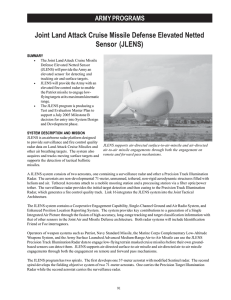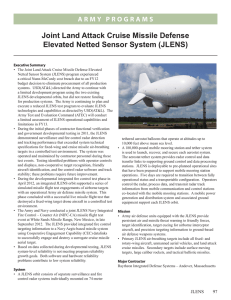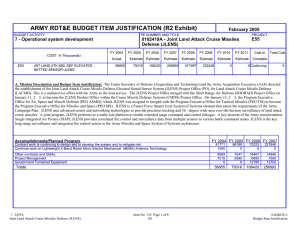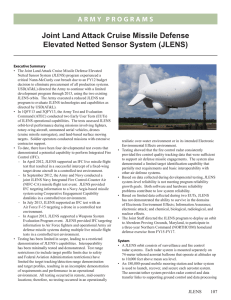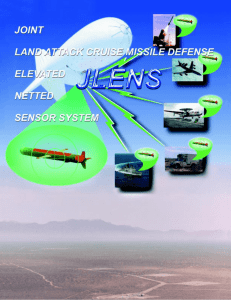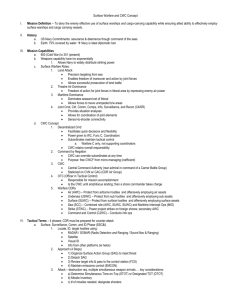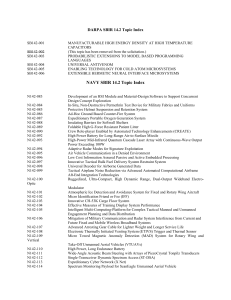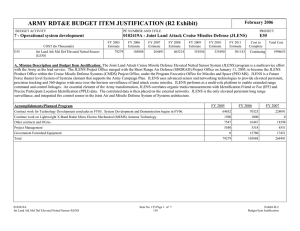T Joint Land Attack Cruise Missile Defense Elevated Netted Sensor (JLENS) ARMY PROGRAMS
advertisement
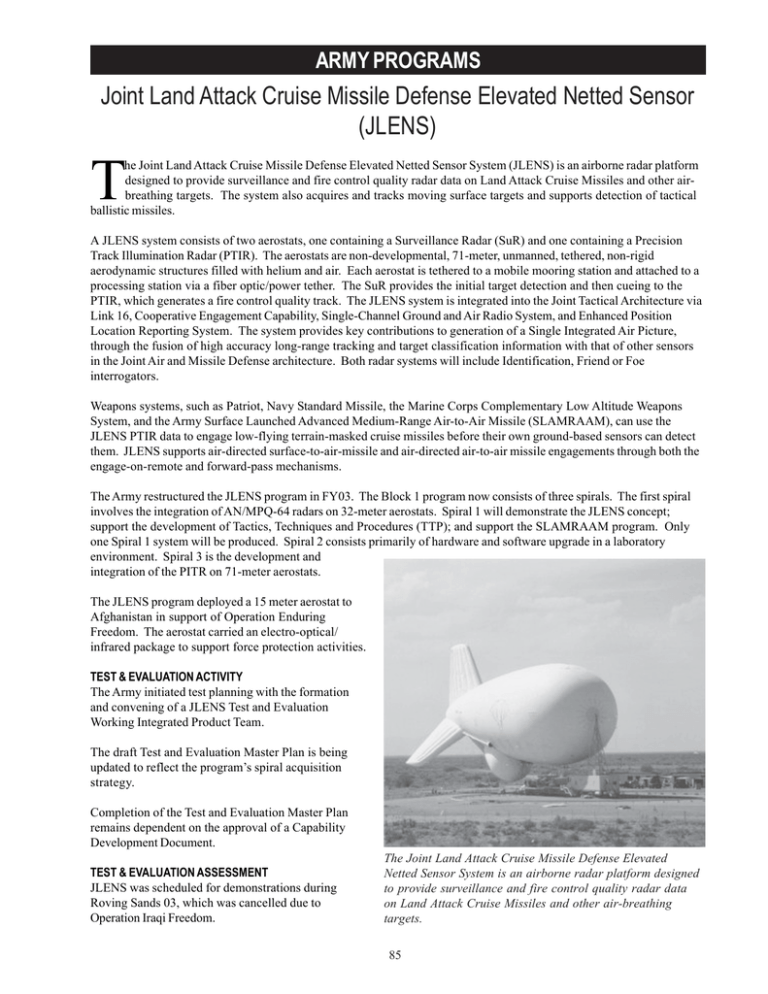
ARMY PROGRAMS Joint Land Attack Cruise Missile Defense Elevated Netted Sensor (JLENS) T he Joint Land Attack Cruise Missile Defense Elevated Netted Sensor System (JLENS) is an airborne radar platform designed to provide surveillance and fire control quality radar data on Land Attack Cruise Missiles and other airbreathing targets. The system also acquires and tracks moving surface targets and supports detection of tactical ballistic missiles. A JLENS system consists of two aerostats, one containing a Surveillance Radar (SuR) and one containing a Precision Track Illumination Radar (PTIR). The aerostats are non-developmental, 71-meter, unmanned, tethered, non-rigid aerodynamic structures filled with helium and air. Each aerostat is tethered to a mobile mooring station and attached to a processing station via a fiber optic/power tether. The SuR provides the initial target detection and then cueing to the PTIR, which generates a fire control quality track. The JLENS system is integrated into the Joint Tactical Architecture via Link 16, Cooperative Engagement Capability, Single-Channel Ground and Air Radio System, and Enhanced Position Location Reporting System. The system provides key contributions to generation of a Single Integrated Air Picture, through the fusion of high accuracy long-range tracking and target classification information with that of other sensors in the Joint Air and Missile Defense architecture. Both radar systems will include Identification, Friend or Foe interrogators. Weapons systems, such as Patriot, Navy Standard Missile, the Marine Corps Complementary Low Altitude Weapons System, and the Army Surface Launched Advanced Medium-Range Air-to-Air Missile (SLAMRAAM), can use the JLENS PTIR data to engage low-flying terrain-masked cruise missiles before their own ground-based sensors can detect them. JLENS supports air-directed surface-to-air-missile and air-directed air-to-air missile engagements through both the engage-on-remote and forward-pass mechanisms. The Army restructured the JLENS program in FY03. The Block 1 program now consists of three spirals. The first spiral involves the integration of AN/MPQ-64 radars on 32-meter aerostats. Spiral 1 will demonstrate the JLENS concept; support the development of Tactics, Techniques and Procedures (TTP); and support the SLAMRAAM program. Only one Spiral 1 system will be produced. Spiral 2 consists primarily of hardware and software upgrade in a laboratory environment. Spiral 3 is the development and integration of the PITR on 71-meter aerostats. The JLENS program deployed a 15 meter aerostat to Afghanistan in support of Operation Enduring Freedom. The aerostat carried an electro-optical/ infrared package to support force protection activities. TEST & EVALUATION ACTIVITY The Army initiated test planning with the formation and convening of a JLENS Test and Evaluation Working Integrated Product Team. The draft Test and Evaluation Master Plan is being updated to reflect the program’s spiral acquisition strategy. Completion of the Test and Evaluation Master Plan remains dependent on the approval of a Capability Development Document. TEST & EVALUATION ASSESSMENT JLENS was scheduled for demonstrations during Roving Sands 03, which was cancelled due to Operation Iraqi Freedom. The Joint Land Attack Cruise Missile Defense Elevated Netted Sensor System is an airborne radar platform designed to provide surveillance and fire control quality radar data on Land Attack Cruise Missiles and other air-breathing targets. 85 ARMY PROGRAMS 86
